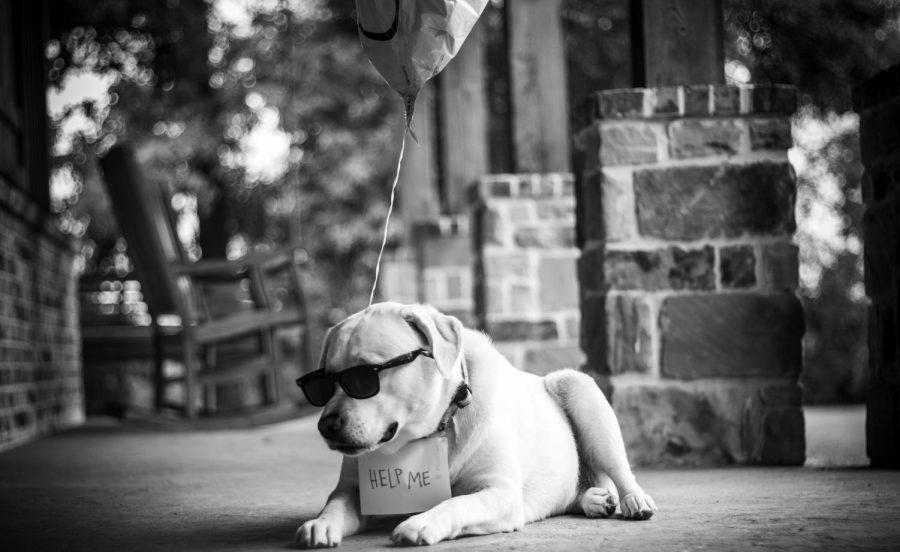A bark for help
No voice for the four-legged fight
Photo by Cayli Clack
Photo Illustration
September 30, 2019
When people hear the words animal abuse, the first thing that might pop into their head is a shivering, dirty, wounded puppy looking up at them with tear stained eyes or a kitten whose leg is in a cast, or, worse, gone. However, animal abuse doesn’t always have to be so extreme.
Animal abuse is a problem that many people may not be aware that they’re committing. What some people don’t realize is that the smallest things could lead to an injury. For example, simply putting a collar on too tight could lead to strangulation or injuring of the neck.
“One of the most common things we see here is just not providing for the animal as required by law,” said Officer Charles Lokey from The Animal Care and Adoption Center of Texarkana.
The Texas Health and Safety Code prohibits a person from intentionally being cruel, though there are ways to be unintentionally cruel to an animal. For instance, transporting an animal in an improper fashion or recklessly handling an animal could be damaging to the animal.
“I will not explain every type of animal cruelty, because it gets pretty explicit,” Lokey said. “Generalized it would be lack of food, lack of water, lack of shelter, cruel mistreatment, locking animals in cars. Those are probably some of the most common things.”
A common example of improperly sheltering an animal is people keeping them in cramped cages for their entire lives, never to run around or see anything other than the walls that imprison them. A frequent place for these types of conditions are in puppy mills.
“We see probably 25 to 30 cases of misdemeanor animal neglect a year,” Lokey said. “As of this year, we’ve had eight cases of felony animal neglect.”
Poor shelter conditions are not the only thing that can cause animals distress. By making an animal do human things, like wearing clothes, the animal is confined and unable to do regular motions, like walking or jumping. Not only is it uncomfortable for the animal’s physical state, but the animal could end up having anxiety and becoming antisocial. The animal will isolate itself and possibly become depressed, leading to loss of appetite or thirst, resulting in the animal becoming malnourished and eventually dying.
“There are no visual signs on the outside,” Lokey said. “But sometimes the damages on the inside can be grave.”
These animals have been through so much trauma, and with no voice to express this, it has negatively affected their mental state. This will create certain aversions to things or people. A simple lightning crack in a storm is the same as the crack of a whip to them.
“In a lot of cases we see animals that don’t react well to men, some animals don’t react well to women, some to children, and we believe it has had some negative experience, such as abuse,” Lokey said.
Being a good pet owner requires a person to show respect and compassion to their animals at all times, though starting to improve how they treat people around them could be the stepping stone to how they treat their pets.
“I think people need to be more respectful to each other and things around them,” Lokey said. “If people are disrespectful and don’t care about the other people around them, they’re not going to care about the animals around them.”
















